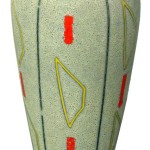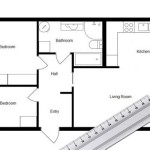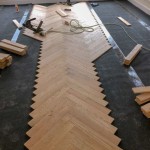Best Area Rug Pad for Hardwood Floors: Protecting Your Investment
Area rugs add comfort, style, and personality to rooms with hardwood floors. However, placing a rug directly on hardwood can lead to scratches, discoloration, and even slippage, posing safety hazards. The solution lies in using a quality area rug pad specifically designed for hardwood floors. These pads provide a crucial barrier, offering a range of benefits that extend the life of both your flooring and your rugs. Selecting the best rug pad, however, requires careful consideration of materials, thickness, and other key factors.
Choosing the right rug pad is not simply about preventing scratches. The ideal pad contributes to the overall comfort and longevity of your floor covering. It provides cushioning underfoot, reduces noise transmission, and helps to prevent the rug from shifting, thus minimizing wear and tear. Furthermore, a proper rug pad can improve air circulation, preventing moisture buildup and potential mold growth. This article will delve into the crucial aspects of selecting the most suitable rug pad for your hardwood floors, exploring various materials, thicknesses, and features to ensure optimal protection and performance.
Understanding the Importance of Rug Pads for Hardwood
Hardwood floors are a considerable investment, and their upkeep is essential for maintaining their beauty and value. Directly placing an area rug on hardwood creates several potential problems. The back of most rugs, especially those with coarse weaves, can scratch the finish of the hardwood surface. Fine particles of dirt and grit that accumulate under the rug can act as abrasives, exacerbating the scratching over time. This constant friction can lead to dulling and visible damage, requiring costly refinishing.
Another significant concern is the potential for staining or discoloration. Some rug backings contain dyes or chemicals that can leach onto the hardwood surface, particularly when exposed to moisture. This can result in permanent staining, especially on lighter-colored woods. A rug pad acts as a protective barrier, preventing these harmful chemicals from coming into direct contact with the floor. Beyond protection, rug pads also address safety concerns. Without a pad, rugs, especially smaller ones, are prone to slipping, creating a significant tripping hazard. A rug pad provides grip, anchoring the rug and preventing unwanted movement, thereby enhancing safety, particularly for children and the elderly.
Finally, rug pads contribute to the overall comfort and acoustics of a room. They provide cushioning underfoot, making the rug more comfortable to walk on. Additionally, they absorb sound, reducing noise transmission and creating a more peaceful environment. The impact of footsteps and furniture movement is dampened, making the room feel quieter and more comfortable. Therefore, investing in a quality rug pad is not just about protecting your hardwood floor; it's about enhancing the overall functionality and enjoyment of your living space.
Key Materials for Hardwood-Safe Rug Pads
The material of a rug pad is a primary factor determining its suitability for hardwood floors. Several materials are specifically designed to be safe and effective, each offering unique advantages. Natural rubber, felt, and a combination of the two are among the most commonly recommended choices.
Natural rubber rug pads are prized for their exceptional grip. They provide a strong, secure hold on both the rug and the floor, preventing slippage and bunching. Natural rubber is also a durable and resilient material, capable of withstanding heavy traffic and maintaining its effectiveness over time. It's important to note that only natural rubber is recommended for hardwood; synthetic rubber, often containing chemicals and adhesives, can damage the floor's finish. Look for pads explicitly labeled as "natural rubber" or "latex-free natural rubber."
Felt rug pads, typically made from recycled fibers, are known for their cushioning and sound absorption properties. They provide a soft, comfortable feel underfoot and help to reduce noise transmission between floors. Felt pads are also relatively dense, offering a good level of protection against scratches and indentations. While felt doesn't offer the same level of grip as natural rubber, it can be combined with a thin layer of rubber on one side to provide both cushioning and non-slip functionality. This combination is a popular choice, offering a balanced approach to protection and comfort.
A combination of felt and natural rubber provides an optimum solution for many hardwood floor owners. These pads often feature a felt layer for cushioning and a thin layer of natural rubber for grip. The felt provides comfort and sound absorption, while the natural rubber keeps the rug firmly in place. This combination offers the benefits of both materials without the drawbacks of using one material exclusively. When choosing a combination pad, ensure that the rubber side is made of natural rubber and is designed to be safe for hardwood floors. Avoid pads with synthetic rubber or adhesives, as these can damage the floor's finish over time.
Avoid rug pads made of PVC or vinyl, as these materials can react with the finish on hardwood floors and cause discoloration or damage over time. These materials may contain chemicals that leach onto the floor, resulting in unsightly stains or a sticky residue. Similarly, steer clear of pads with adhesives, as they can leave a permanent residue on the hardwood, making it difficult or impossible to remove. Always check the manufacturer's specifications to ensure that the rug pad is specifically designed and safe for use on hardwood floors.
Considering Thickness and Density for Optimal Performance
The thickness and density of a rug pad play a crucial role in its overall performance. Thickness affects the level of cushioning and comfort underfoot, while density influences the pad's ability to protect the floor from impact and wear. The ideal thickness and density will depend on the specific type of rug, the amount of foot traffic in the area, and personal preferences. A thicker pad will generally provide more cushioning and noise insulation, while a denser pad will offer better protection against furniture indentations and wear.
For thinner rugs, such as flat weaves or kilims, a thicker rug pad is generally recommended to provide adequate cushioning and prevent the rug from feeling thin and insubstantial. A pad that is ¼ to ½ inch thick can significantly enhance the comfort of a thin rug. This added thickness also helps to prevent the rug from shifting and bunching, which is particularly important in high-traffic areas. However, be mindful of door clearances when selecting a thicker pad to ensure that doors can still open and close freely.
For thicker rugs, such as shag rugs or high-pile rugs, a thinner pad may be sufficient. The rug itself already provides substantial cushioning, so the primary function of the pad is to protect the floor and prevent slippage. A pad that is 1/8 to ¼ inch thick is usually adequate for thicker rugs. The density of the pad is still important, even with a thinner profile, to ensure that it provides adequate protection against furniture indentations and wear. A dense felt or rubber pad can provide excellent protection without adding excessive thickness.
In high-traffic areas, such as hallways or living rooms, a denser rug pad is essential to withstand the constant foot traffic and prevent wear and tear on both the rug and the floor. A denser pad will also provide better protection against furniture indentations, which can be particularly noticeable on hardwood floors. Consider a felt pad with a dense layer of natural rubber for optimal performance in high-traffic areas. This combination provides both cushioning and protection, ensuring that your rug and floor remain in good condition for years to come.
When selecting a rug pad, it's also important to consider the weight of the furniture that will be placed on the rug. Heavier furniture can compress the pad over time, reducing its effectiveness. A denser pad will be better able to withstand the weight of heavy furniture and maintain its protective qualities. If you plan to place heavy furniture on the rug, choose a pad with a high density and consider using furniture pads under the legs of the furniture to further protect the floor.
Proper Sizing and Installation of Rug Pads
The correct size and installation of a rug pad are crucial for its effectiveness. An improperly sized or installed pad can negate its benefits, leading to slippage, bunching, and inadequate protection. The ideal size for a rug pad is slightly smaller than the rug itself. This allows the rug to lie flat and prevents the pad from being visible around the edges.
When determining the appropriate size for a rug pad, subtract approximately one to two inches from each side of the rug's dimensions. For example, if your rug is 8 feet by 10 feet, the ideal size for the rug pad would be approximately 7 feet 10 inches by 9 feet 10 inches. This slight reduction in size ensures that the pad remains hidden beneath the rug and prevents it from interfering with the rug's edges. If a standard size rug pad is not available in the exact dimensions needed, it is generally better to choose a slightly smaller pad rather than a larger one. Overlapping the pad can create a tripping hazard and detract from the rug's appearance.
Installing a rug pad is a straightforward process. Begin by thoroughly cleaning the hardwood floor to remove any dirt, dust, or debris. Place the rug pad on the floor, ensuring that it is centered in the area where the rug will be placed. Carefully position the rug on top of the pad, making sure that it is properly aligned. Smooth out any wrinkles or creases in the rug, starting from the center and working outwards. If necessary, trim the rug pad to ensure that it is not visible around the edges of the rug.
For larger rugs, it may be helpful to have a second person assist with the installation process. This can make it easier to align the rug and smooth out any wrinkles or creases. If the rug pad is made of multiple pieces, ensure that they are properly aligned and secured together before placing the rug on top. Some rug pads come with adhesive strips or connectors to help join the pieces together. If the rug is prone to slipping, consider using rug grippers in addition to the rug pad. These grippers can be placed in the corners of the rug to provide extra traction and prevent movement.
Regular maintenance is essential for preserving the effectiveness of your rug pad. Periodically lift the rug and vacuum the pad to remove any dirt or debris that may have accumulated. Check the pad for signs of wear and tear, and replace it if necessary. By following these simple steps, you can ensure that your rug pad provides years of reliable protection for your hardwood floors.

What Type Of Non Slip Rug Pad Is Best For Hardwood Floors Rugpad

The Best Rug Pads Reviews By Wirecutter

Non Slip Rug Pad Options For Hardwood Flooring And More

The Best Rug Pads Reviews By Wirecutter

Waterproof Rug Pad Pet Friendly Rugs

Non Slip Area Rug Pad 2 5 X 9 Ft Carpet Hardwood Floors Anti Skid Soundproof Under Felt Thin Runner Outdoor Central Rubber Cushioned Kitchen Comfort Protector Padding Shelf Drawer Liner Walmart Com

The Best Rug Pads Reviews By Wirecutter

Rug Pads For Hardwood Floors Rugpadusa

Non Slip Rug Pad Options For Hardwood Flooring And More

Best Rug Pads For Hardwood Floors Seer Flooring







